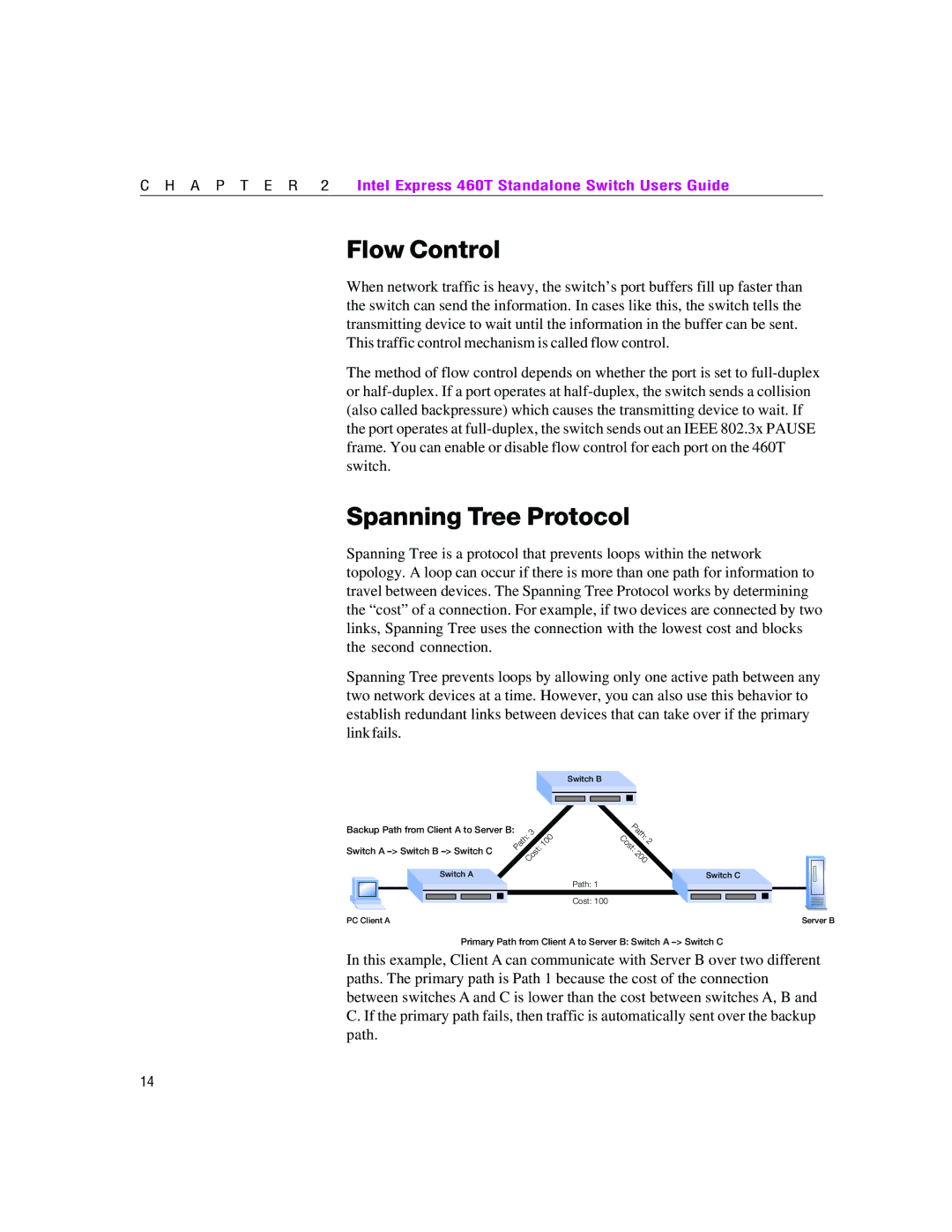
C H A P T E R 2 | Intel Express 460T Standalone Switch Users Guide |
Flow Control
When network traffic is heavy, the switch’s port buffers fill up faster than the switch can send the information. In cases like this, the switch tells the transmitting device to wait until the information in the buffer can be sent. This traffic control mechanism is called flow control.
The method of flow control depends on whether the port is set to
Spanning Tree Protocol
Spanning Tree is a protocol that prevents loops within the network topology. A loop can occur if there is more than one path for information to travel between devices. The Spanning Tree Protocol works by determining the “cost” of a connection. For example, if two devices are connected by two links, Spanning Tree uses the connection with the lowest cost and blocks the second connection.
Spanning Tree prevents loops by allowing only one active path between any two network devices at a time. However, you can also use this behavior to establish redundant links between devices that can take over if the primary linkfails.
Switch B
Backup Path from Client A to Server B:
Switch A
Switch A
Path: | 3 | 100 |
| ||
Cost: |
| |
Path: | |
Cost: | 2 |
200 | |
Path: 1 | Switch C |
| |
Cost: 100 |
|
PC Client A | Server B |
Primary Path from Client A to Server B: Switch A
In this example, Client A can communicate with Server B over two different paths. The primary path is Path 1 because the cost of the connection between switches A and C is lower than the cost between switches A, B and C. If the primary path fails, then traffic is automatically sent over the backup path.
14
